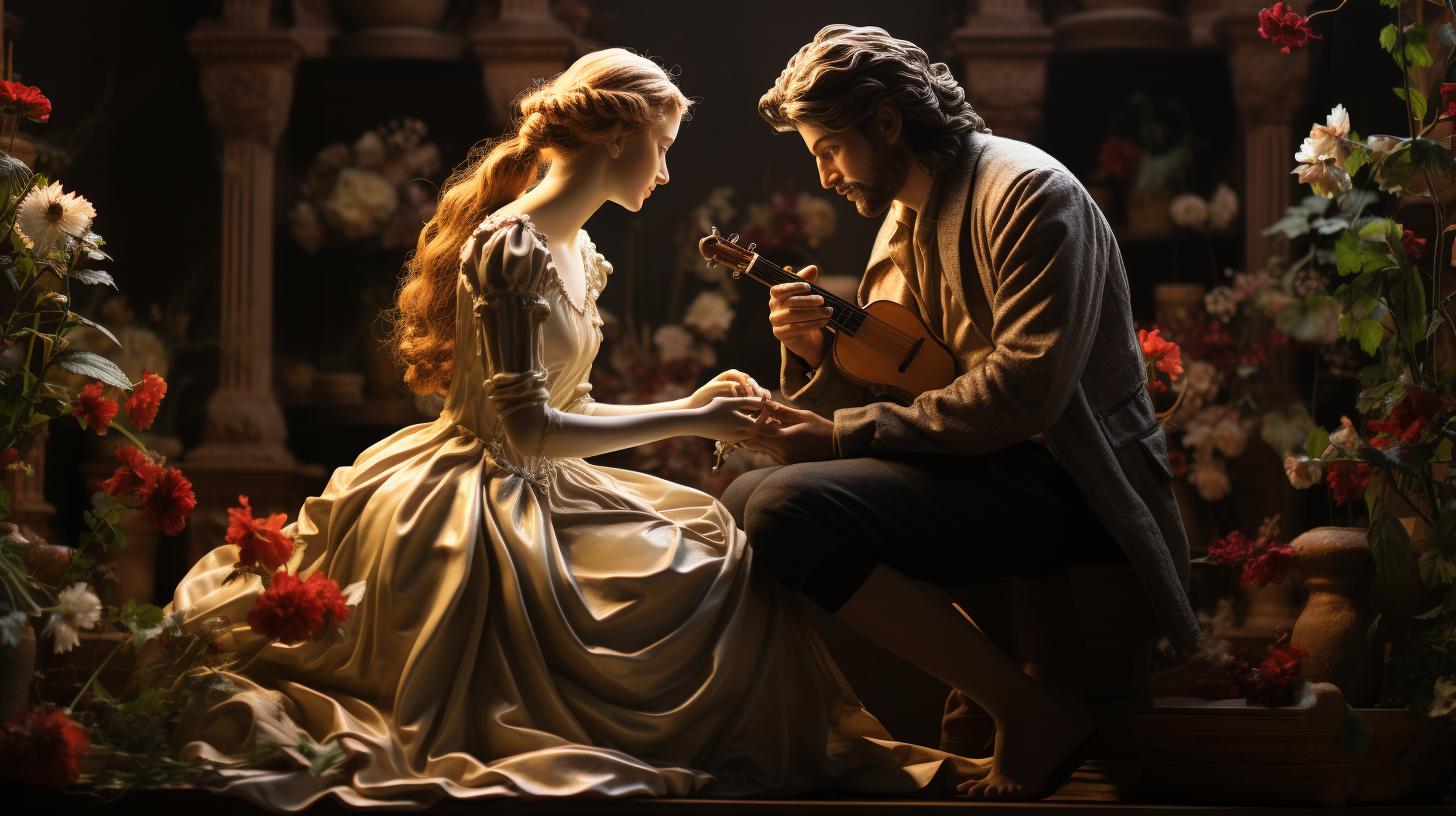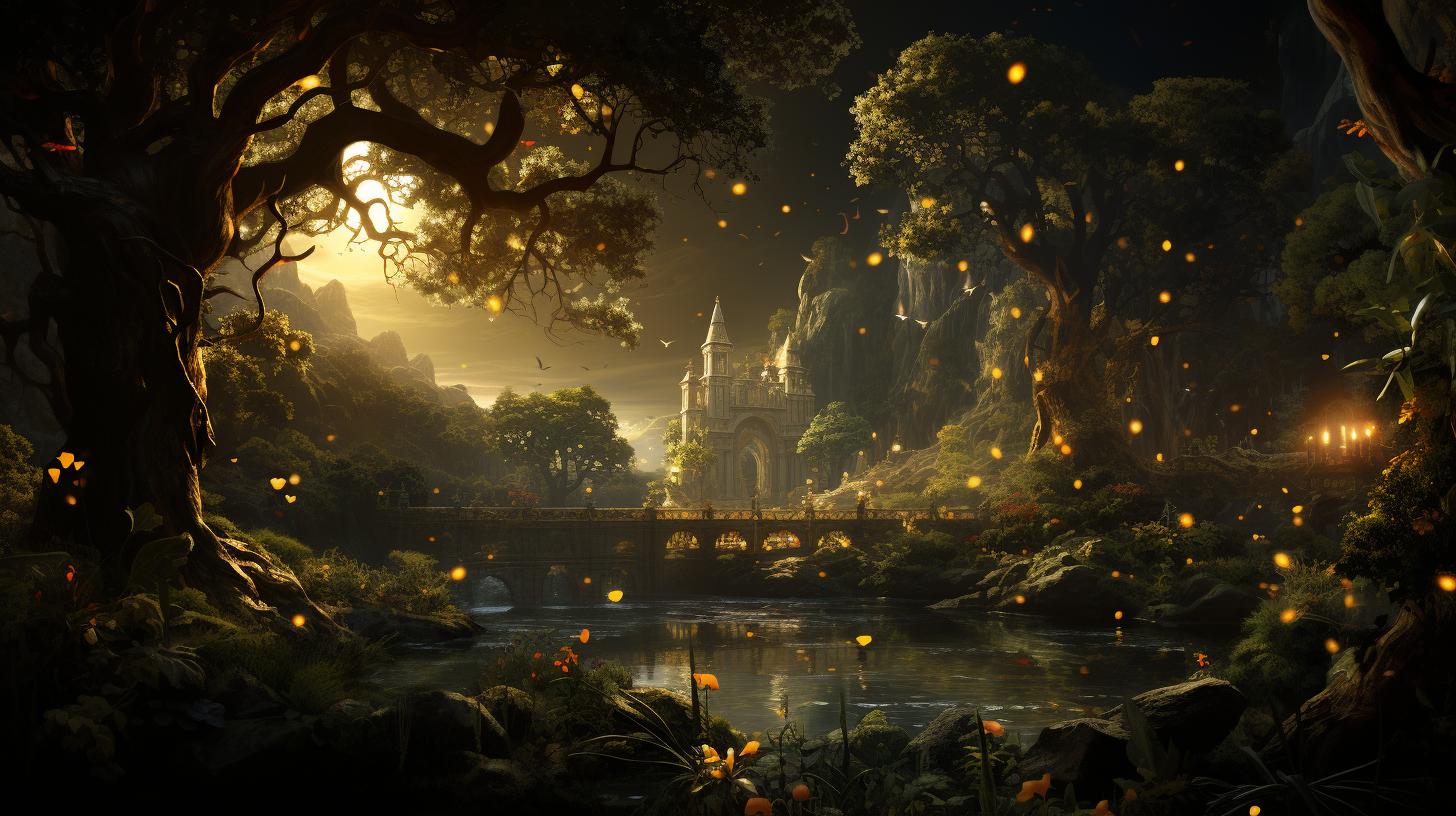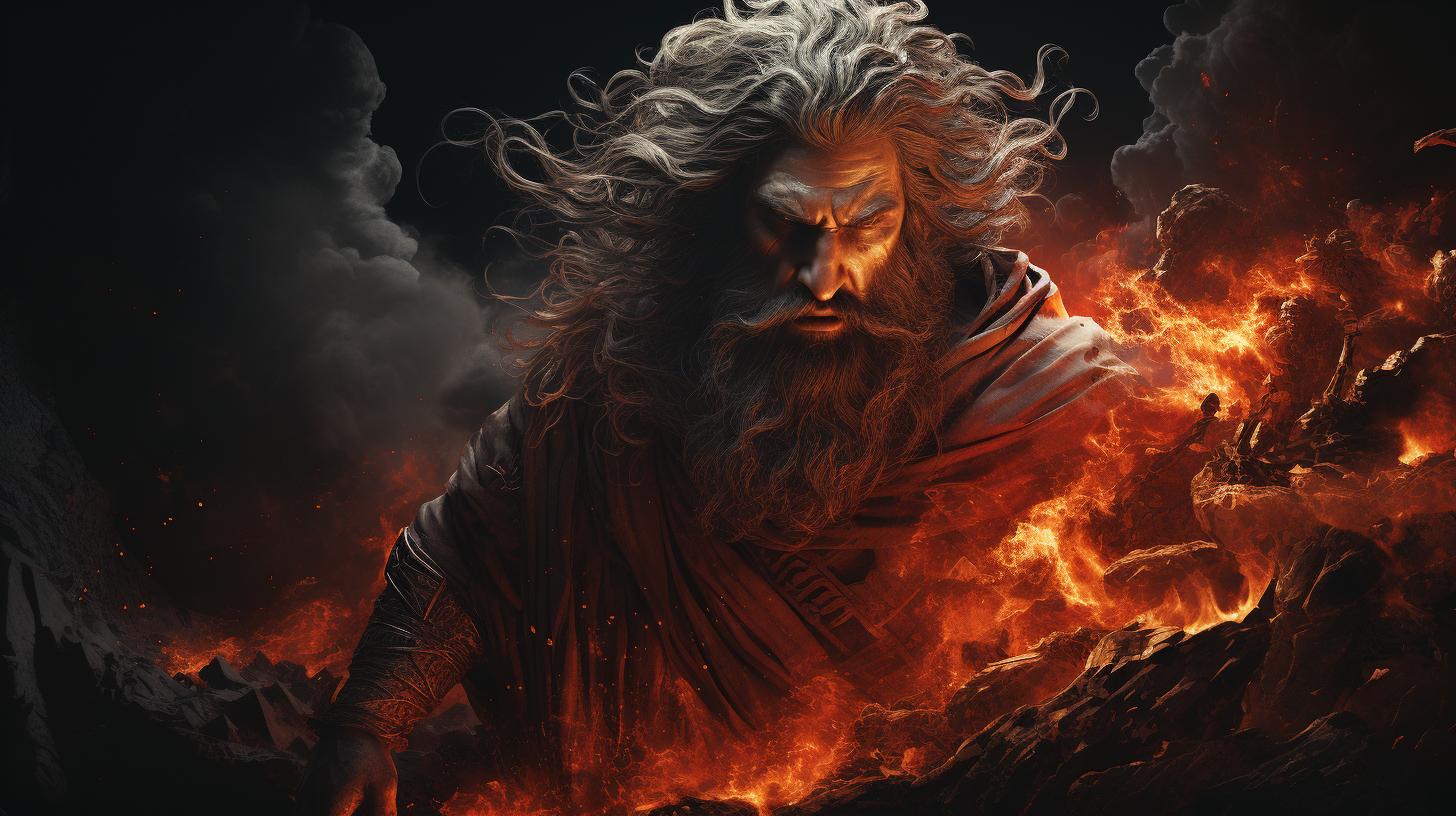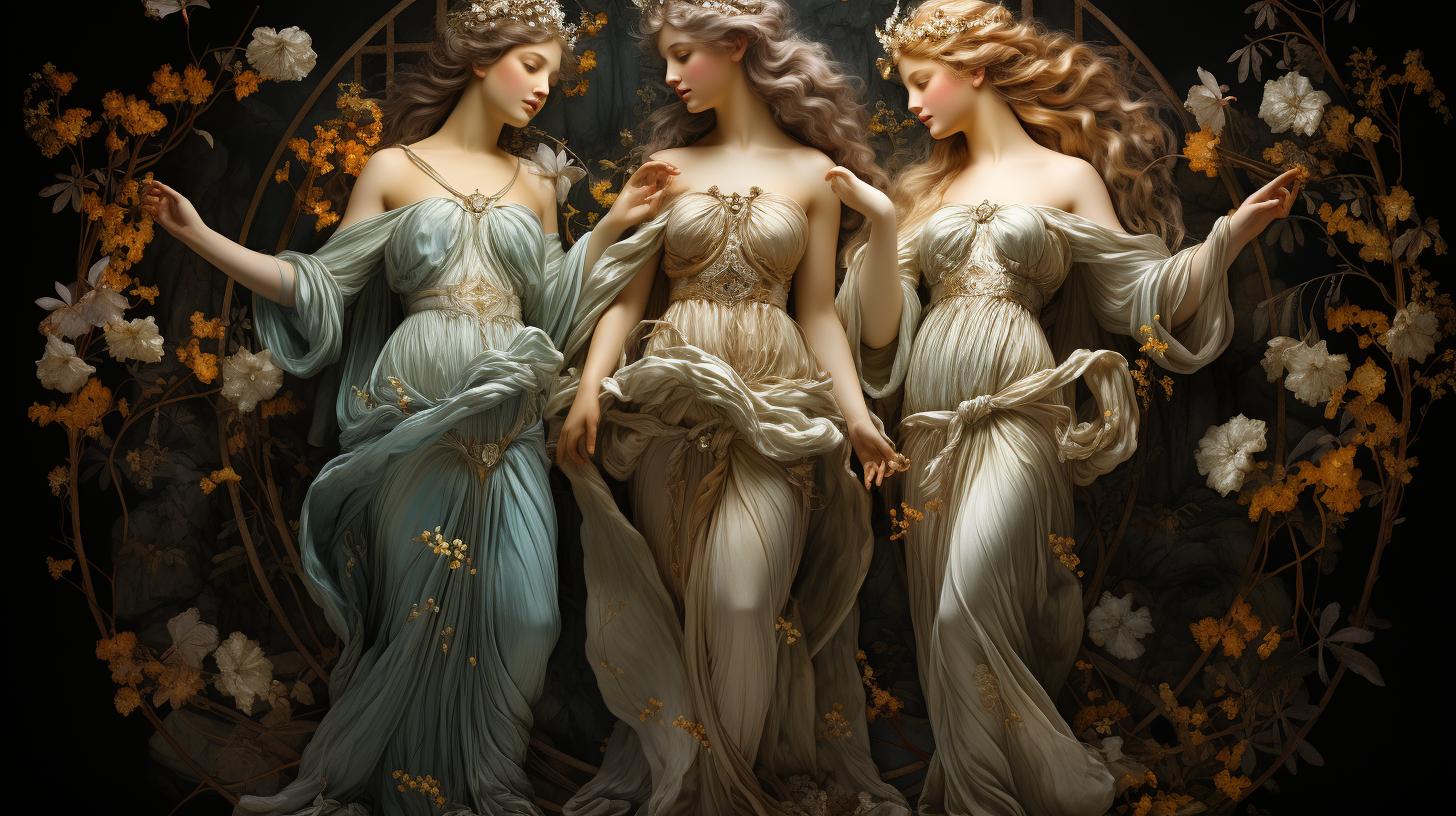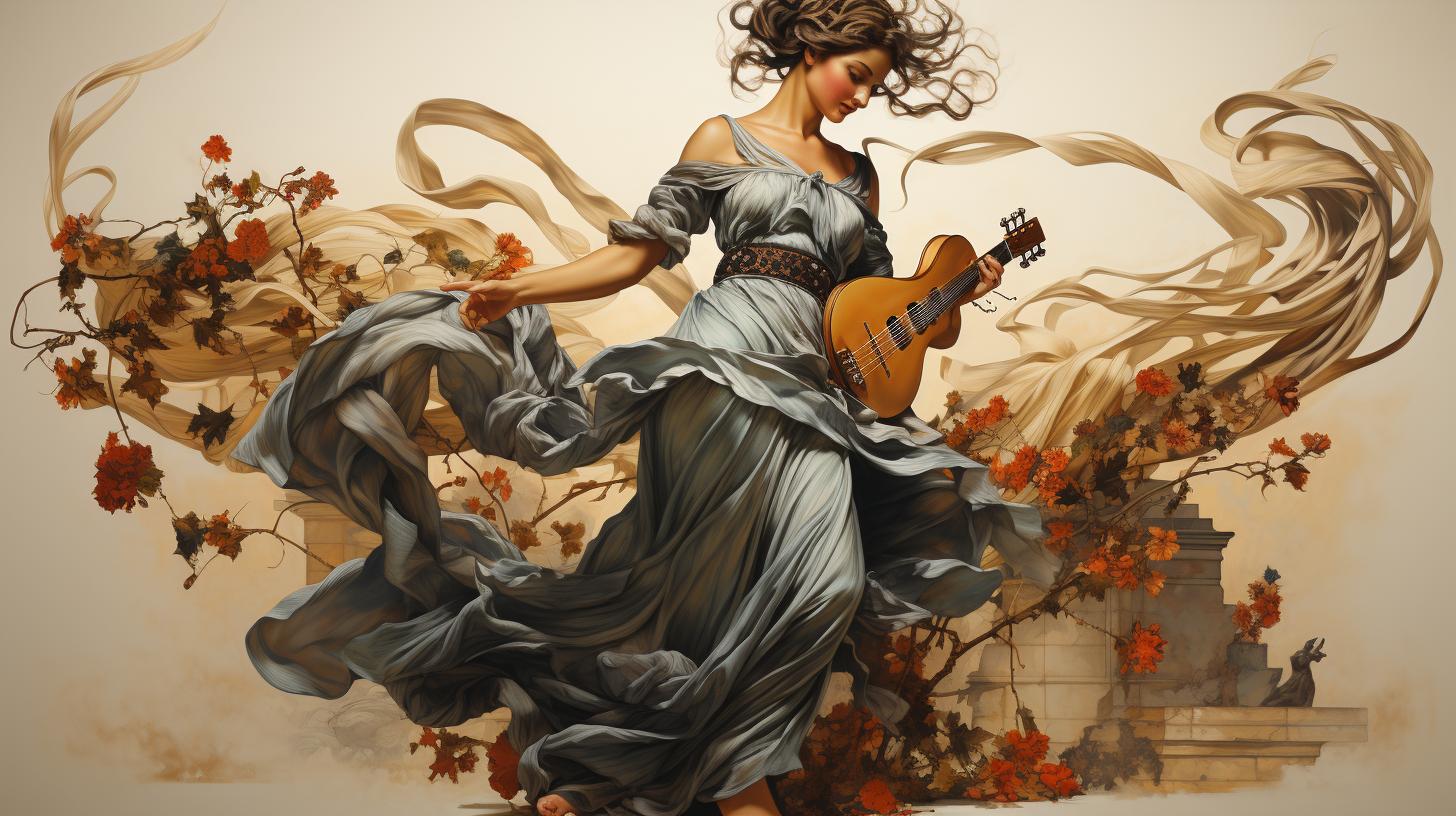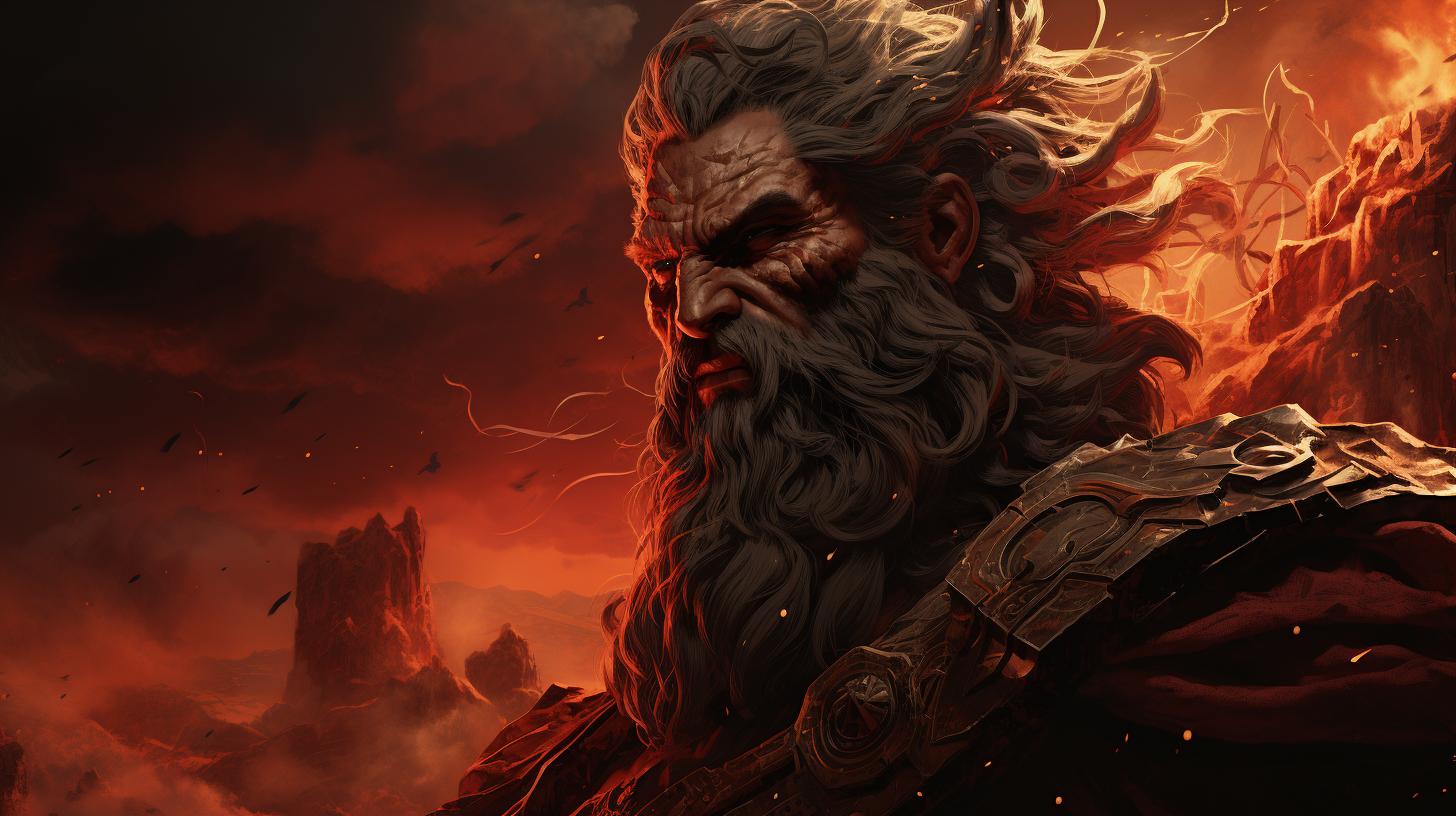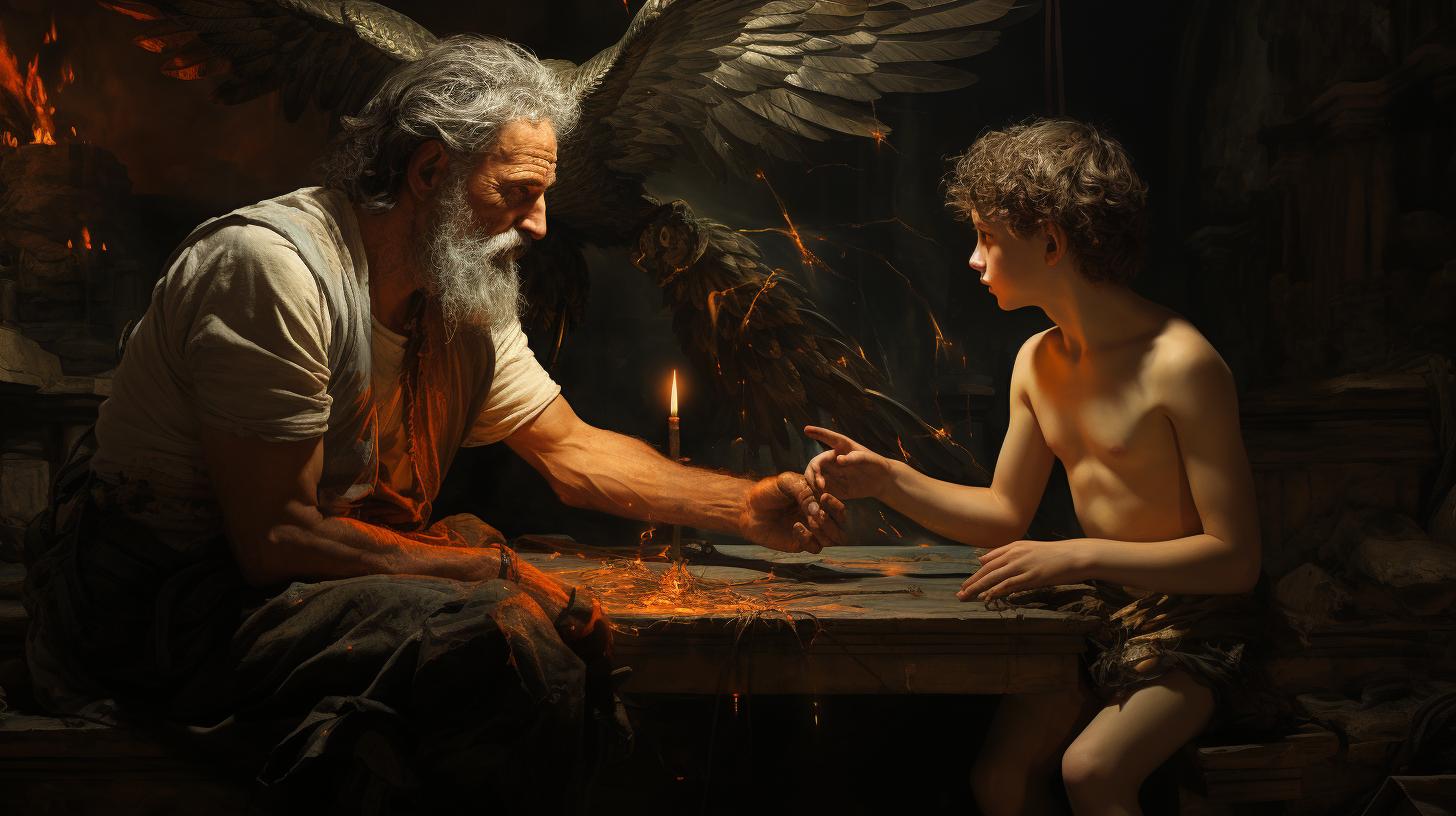Pygmalion and Galatea: Exploring the Fascinating Greek Mythology
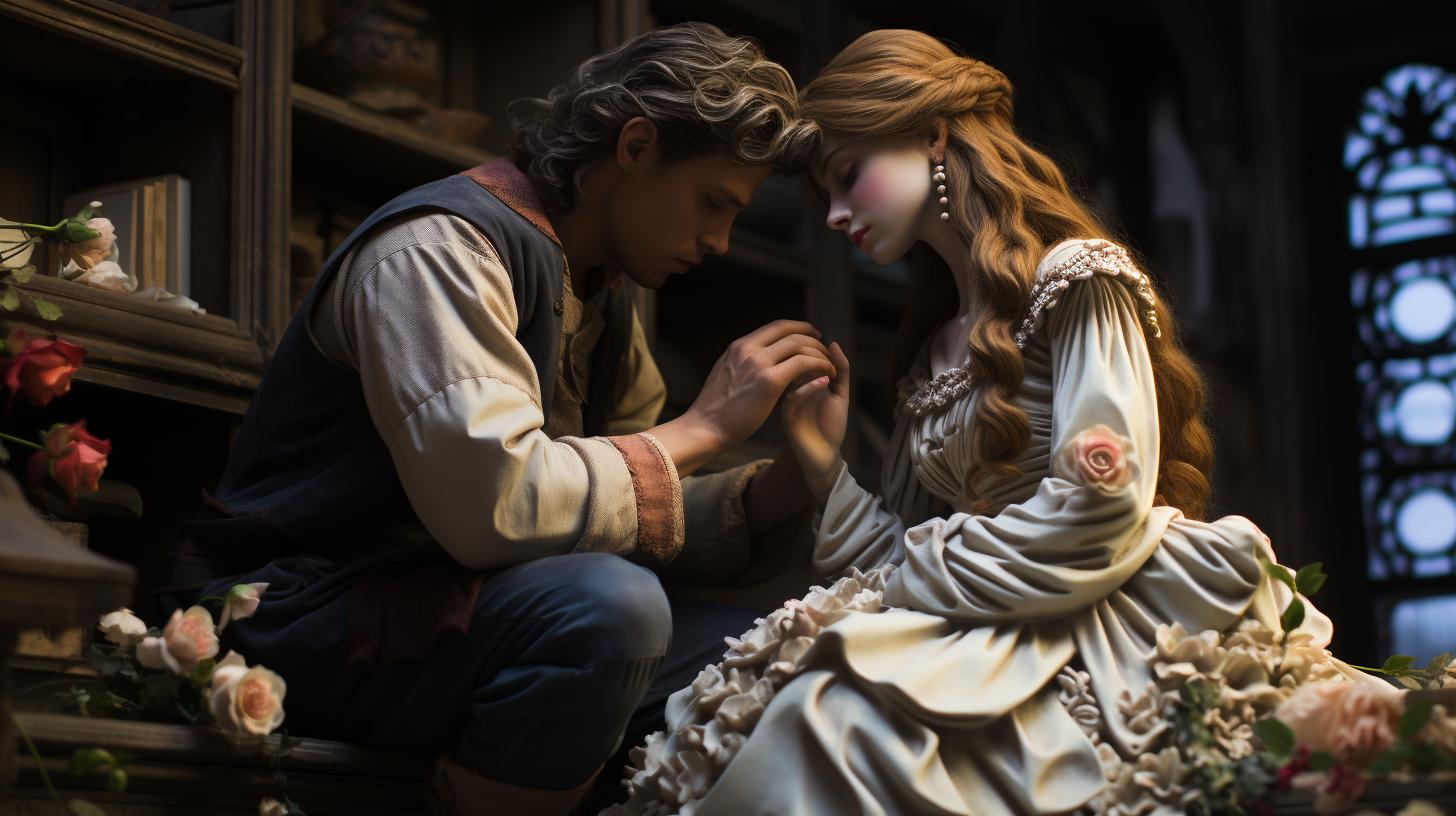
Pygmalion and Galatea, a captivating Greek myth, revolves around the love of a sculptor named Pygmalion for his own creation—a flawless ivory statue. This article delves into the background, story, and various interpretations surrounding this mythological tale.
We’ll explore its representation in art and literature, such as George Bernard Shaw’s play “Pygmalion,” as well as the influence it holds in modern culture. Join us on this journey to discover the significance and complexities of Pygmalion and Galatea in Greek mythology.
Background of Pygmalion and Galatea Greek Mythology
The myth of Pygmalion and Galatea is rooted in ancient Greek mythology, capturing the intriguing tale of a sculptor named Pygmalion and his profound connection with his own creation. The story unfolds in a time when Pygmalion had become disillusioned with real women and decided to devote himself entirely to his craft, sculpting.
Pygmalion’s skill as a sculptor was unparalleled, and he poured his heart and soul into creating a statue of exquisite beauty out of ivory. Crafted with precision and love, the statue became the embodiment of Pygmalion’s ideal woman.
His creation exceeded all expectations, radiating a charm and perfection that surpassed anything he had encountered before.
Enamored and captivated by his own creation, Pygmalion’s feelings transcended mere admiration. he treated the statue as if she were his beloved wife, adorning her with clothing and jewelry, bestowing upon her gifts fit for a queen.
The lines between reality and imagination blurred as Pygmalion’s affection grew.
Within Pygmalion’s heart, a longing emerged – a desire for his statue to come to life, to be more than just an object of beauty.
United by devotion and faith, Pygmalion approached the goddess Aphrodite, offering a heartfelt plea for his beloved statue to be granted life. The divine intervention of the goddess transformed the statue into a living woman, Galatea, a being brought to existence through the power of love and devotion.
Pygmalion and Galatea’s union transcended the boundaries of mere mortal existence. They joyously became husband and wife, sharing a profound connection that surpassed the boundaries of reality and dreams. From their love and union, a child named Pafos was born, further affirming their extraordinary bond and the power of Pygmalion’s unwavering devotion.
This timeless myth of Pygmalion and Galatea has sparked countless interpretations and has been widely represented in various art forms throughout history. It continues to intrigue and captivate audiences, raising questions about the nature of love, creativity, and the boundaries of human imagination.
The Story of Pygmalion and Galatea
In Greek mythology, the story of Pygmalion and Galatea is a captivating tale that revolves around the love of a sculptor named Pygmalion for his own creation. This section delves into the narrative of this mythical story, exploring Pygmalion’s disillusionment with women, the creation of the perfect statue, his profound love for his creation, and his heartfelt desire for the statue to come to life.
Pigmalion’s Disillusionment with Women
After experiencing disappointment and disillusionment with the women around him, Pygmalion decided to devote himself entirely to his craft of sculpture. He became disenchanted by the flaws and imperfections he observed in mortal women, leading him to withdraw from romantic relationships and focus solely on his artistic pursuits.
The Creation of the Perfect Statue
Determined to create the epitome of beauty, Pygmalion meticulously carved an exquisite statue out of ivory. This statue possessed such unmatched perfection that it surpassed anything he had ever encountered in reality.
Pygmalion poured his skill, passion, and longing for ideal love into his creation.
Pygmalion’s Love for His Creation
Gradually, Pygmalion’s admiration for the statue evolved into deep love and affection. He began to treat the statue as if it were his beloved, adorning it with gifts, dressing it in fine clothes and jewelry, and even sharing his innermost thoughts and emotions.
His devotion to the statue reflected his yearning for a love untainted by imperfections.
Pygmalion’s Wish for the Statue to Come to Life
Consumed by his intense desire, Pygmalion beseeched the goddess Aphrodite, offering a heartfelt prayer and an offering, expressing his wish for the statue to become a living woman. He fervently hoped for his creation to possess not only physical beauty but also a soul and the ability to reciprocate his love.
The Transformation of the Statue into Galatea
Aphrodite, moved by Pygmalion’s sincerity and the purity of his love, granted his wish. The statue miraculously came to life, transformed into a beautiful woman named Galatea. Galatea embodied all the qualities he had longed for, becoming the fulfillment of Pygmalion’s longing for a perfect love.
Pygmalion and Galatea’s Marriage and Their Son, Pafos
Filled with joy and gratitude, Pygmalion married Galatea, their union symbolizing the ultimate union of art and life. From their love, a son named Pafos was born, representing the continuation of their extraordinary and mythic lineage.
Representation in Art and Literature
The myth of Pygmalion and Galatea has captivated artists and writers throughout history, inspiring various interpretations in art and literature.
Pygmalion in George Bernard Shaw’s Play
One notable representation of the Pygmalion and Galatea myth is found in George Bernard Shaw’s play, aptly titled ‘Pygmalion’. Published in 1913, the play introduces audiences to Henry Higgins, a phonetics professor who takes on the challenge of transforming a Cockney flower girl, Eliza Doolittle, into a refined lady of high society.
Shaw’s play presents a modern adaptation of the myth, exploring themes of social class, transformation, and the power of language. It delves into the relationship between creator and creation, as well as the consequences of imposing societal expectations on individuals.
Pygmalion and Galatea in Film and Music
Besides Shaw’s play, the narrative of Pygmalion and Galatea has also been brought to life through various cinematic and musical adaptations.
In film, one notable example is the 1938 movie ‘Pygmalion’, directed by Anthony Asquith and Leslie Howard.
This film adaptation, based on Shaw’s play, received critical acclaim and won an Oscar for Best Screenplay.
In the music realm, the myth has served as inspiration for numerous compositions. Perhaps one of the most famous is the ballet titled ‘Pygmalion’, composed by Jean-Philippe Rameau in the 18th century.
This enchanting ballet captures the essence of the myth through its expressive choreography and emotionally evocative music.
Additionally, the fascination with the Pygmalion and Galatea myth continues to influence contemporary artists, musicians, and filmmakers, who find new ways to explore and reinterpret the captivating tale.
Interpretations and Debates
The myth of Pygmalion and Galatea has sparked various interpretations and debates, offering intriguing perspectives on its meaning and implications. These discussions have led to fascinating discussions on different aspects of the myth.
Different Perspectives on the Myth
There are diverse interpretations of the Pygmalion and Galatea myth, each providing a unique lens through which to analyze the story. Scholars and philosophers have approached the myth from animistic perspectives, considering the entire world as alive and interconnected.
This viewpoint emphasizes the intricate relationship between Pygmalion, the sculptor, and Galatea, his creation, suggesting an inherent sense of vitality within objects. Additionally, feminist scholars have reexamined the myth, questioning the underlying dynamics of desire and control, and highlighting the gendered power dynamics present in Pygmalion’s ultimate creation of the “perfect” woman.
Galatea’s Agency and Free Will
One of the central debates surrounding the myth revolves around Galatea’s agency and free will. Some argue that Galatea, as a living woman, possesses her own desires and autonomy, distinct from the intentions and control of Pygmalion.
They propose that her transformation into a real woman signifies her individuality and independent existence. Conversely, others argue that Galatea remains merely an extension of Pygmalion’s desire and creative power, lacking personal agency and free will.
This debate raises philosophical questions about the boundaries of creation and autonomy.
Feminist Critiques of Pygmalion’s Desire for Control
Feminist scholars have scrutinized the portrayal of Pygmalion’s desire for control over Galatea, questioning the underlying power dynamics at play. They subject Pygmalion’s idealization and objectification of Galatea to critical examination, highlighting the problematic nature of male fantasies that seek to create and control an idealized version of womanhood.
This feminist critique challenges societal narratives that perpetuate the notion of women as objects to be molded and controlled, ultimately questioning the broader implications of such desires in patriarchal systems.
These interpretations and critiques offer thought-provoking insights into the Pygmalion and Galatea myth, shedding light on its psychological, social, and philosophical implications within different contexts and perspectives.
Influence and Relevance in Modern Culture
Contemporary Adaptations and References
Pygmalion and Galatea’s timeless tale continues to inspire contemporary artists, writers, and filmmakers. Numerous adaptations in various art forms pay homage to this iconic myth. For example, it has served as a source of inspiration for modern plays, novels, and even comic book stories.
Additionally, popular culture references to Pygmalion and Galatea can be found in movies, TV shows, and music, showcasing its enduring influence in today’s society.
Pygmalion and Galatea as a Symbol of Artistic Creation
The story of Pygmalion and Galatea holds a significant place in the world of art as a symbol of creative power. Artists often draw parallels between Pygmalion’s craftsmanship and their own artistic endeavors.
Just as Pygmalion brought life to his intricate sculpture, artists interpret this myth as a representation of the transformative and life-giving nature of art. Galatea’s metamorphosis from an inanimate object to a living being symbolizes the power of artistic creation and its ability to breathe life into the imagination.
Psychological and Symbolic Analysis of the Myth
Psychologists and scholars have delved into the psychological and symbolic implications embedded in the myth of Pygmalion and Galatea. Some interpret the story as a reflection of the human desire for control and perfection, representing the subconscious longing to shape and mold others according to personal ideals.
Others see it as an exploration of the inherent power dynamics in relationships and the struggles of identity formation. The myth invites deep analysis and sparks debates on themes such as love, agency, and the fluid boundaries between reality and fantasy.
Symbolically, Pygmalion and Galatea’s story can be seen as a metaphor for the transformative power of love. It portrays the profound impact that love can have on an individual’s life, as Galatea’s existence is ignited by Pygmalion’s deep affection.
The myth invites contemplation on the themes of human connection, emotional transformation, and the ability of love to transcend barriers and bring about profound change.
.

